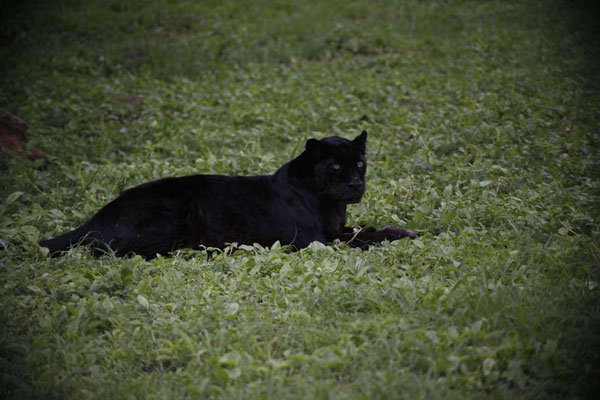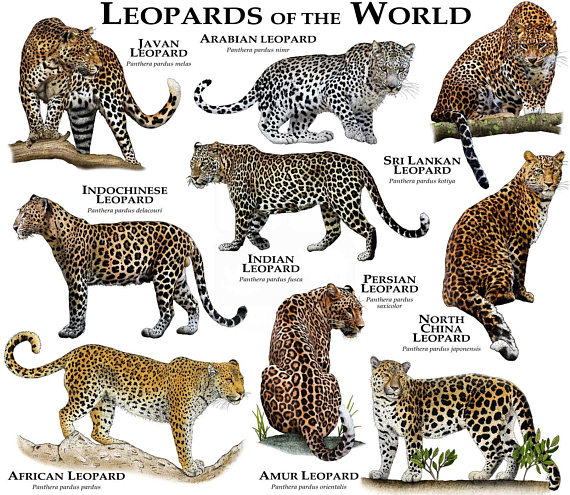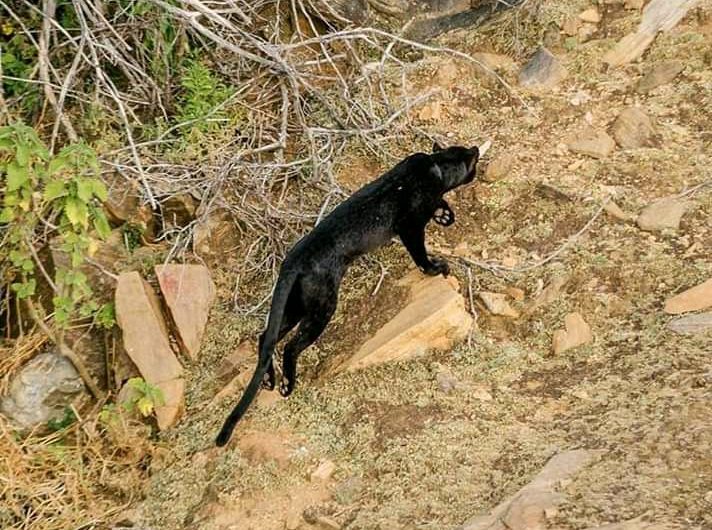The black leopard is an animal full of mystery. Many people have reported a few and unconfirmed short glimpses of this shadowy cat, until recently when researches from the San Diego Zoo confirmed that indeed it has been spotted and photographed. Although a handful can be found in zoo cages dotted around the world, no photographs of black leopards in their natural and wild habitat actually existed.

The black leopard, the quite opposite of albinism is called melanism and it is the result of a gene that causes a very small supply or lack of pigment in the skin or fur of an animal so that it appears black. Melanistic leopards have been reported in and around Kenya for decades, but scientific confirmation and documentation of their existence remains quite rare.
Black leopard sightings go way back to the year 1952 when nature conservationist Bryan Jones, founder of the Moholoholo Rehabilitation Centre near Hoedspruit in South Africa, recorded a sighting made by a child in Pilgrim’s Rest.
Some individuals like in the case of Burrard Lucas and as accounted for in his blog here have dedicated the majority of their working lives trying to capture evidence of the ghostly cat.
The only documented evidence which was discovered in 2017 from a 1909 photograph taken in Addis Ababa, Ethiopia’s capital, and stored in the collections of the National Museum of Natural History in Washington, D.C. Their population and distribution across the African continent have shrunk by at least 66 percent due to loss of habitat and decrease in prey population.
“Almost everyone has a story about seeing one, it’s such a mythical thing,”
“Even when you talk to the older guys that guided safaris in Kenya many years ago, back when hunting was legal [in the 1950s and ‘60s], there was a known thing that you didn’t hunt black leopards. If you saw them, you didn’t take it.”
Very Elusive and Rare
There are a few subspecies of the leopard, nine to be exact ranging from Africa all the way to eastern Russia as illustrated below.

And while 11 percent of leopards alive today are thought to be melanistic, says Pilfold, most are found in Southeast Asia, where tropical forests offer an abundance of shade.
Its thought that melanism provides additional camouflage in those habitats especially in the dark, giving the predators an advantage when it comes to hunting, says Vincent Naude, leopard genetic forensics project coordinator for the nonprofit Panthera, who was not involved with this research.
But in Kenya, black leopards sometimes referred to as “black panthers”—a collective term that refers to any big, black cat are sometimes seen to roam in semi-arid shrubland.
“Our leopards live in savannah-type environments, so having that extra melanism doesn’t give them an adaptive advantage,” says Naude. Even still, given their nocturnal lifestyle, a bit of additional pigmentation certainly doesn’t hurt.
The fact the young female was traveling with her mother also suggests that her unique coloration hasn’t had an impact on familial bonding, Pilfold notes.
Amazing how the fictional country of Wakanda which sounds a bit like “Waganda” or Ugandans in Swahili , home of the superhero Black Panther, is located in East Africa, fairly close to Kenya which incidentally is where the Award-winning actress, Lupita Nyongo comes from.
![]()


Comments